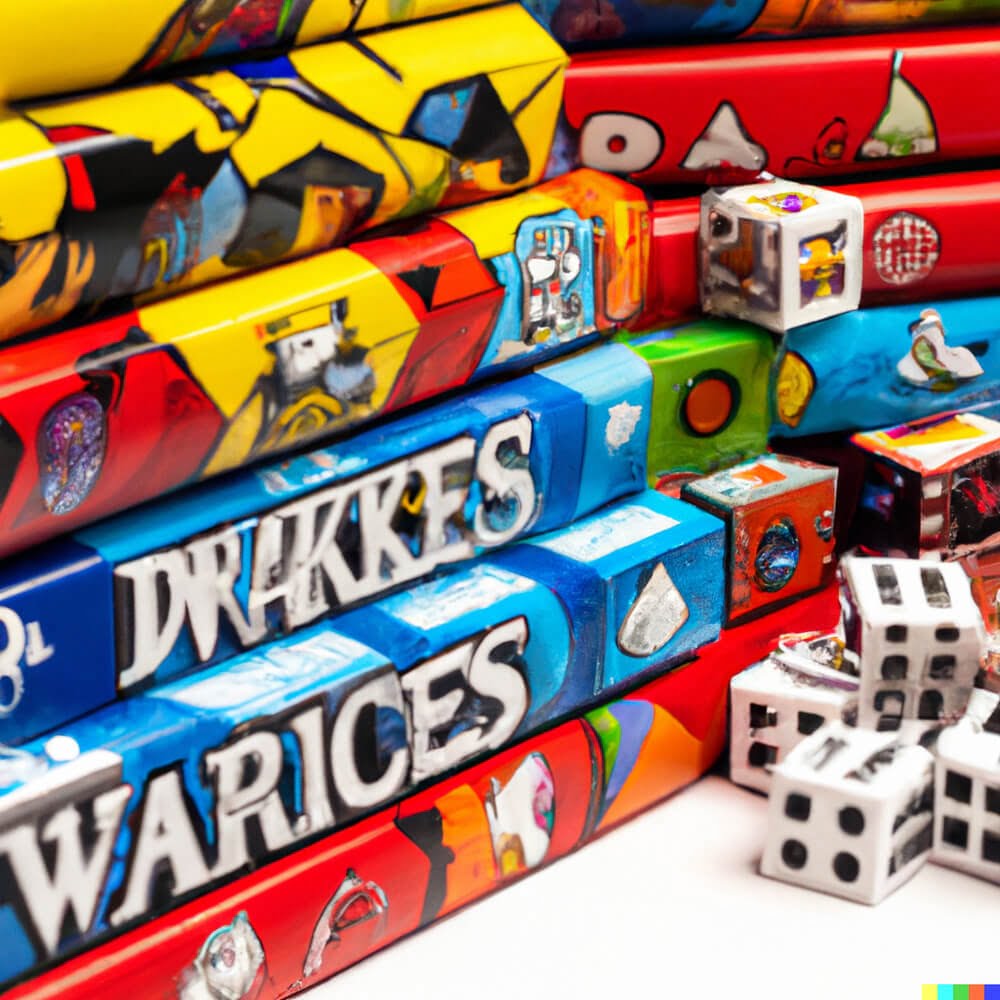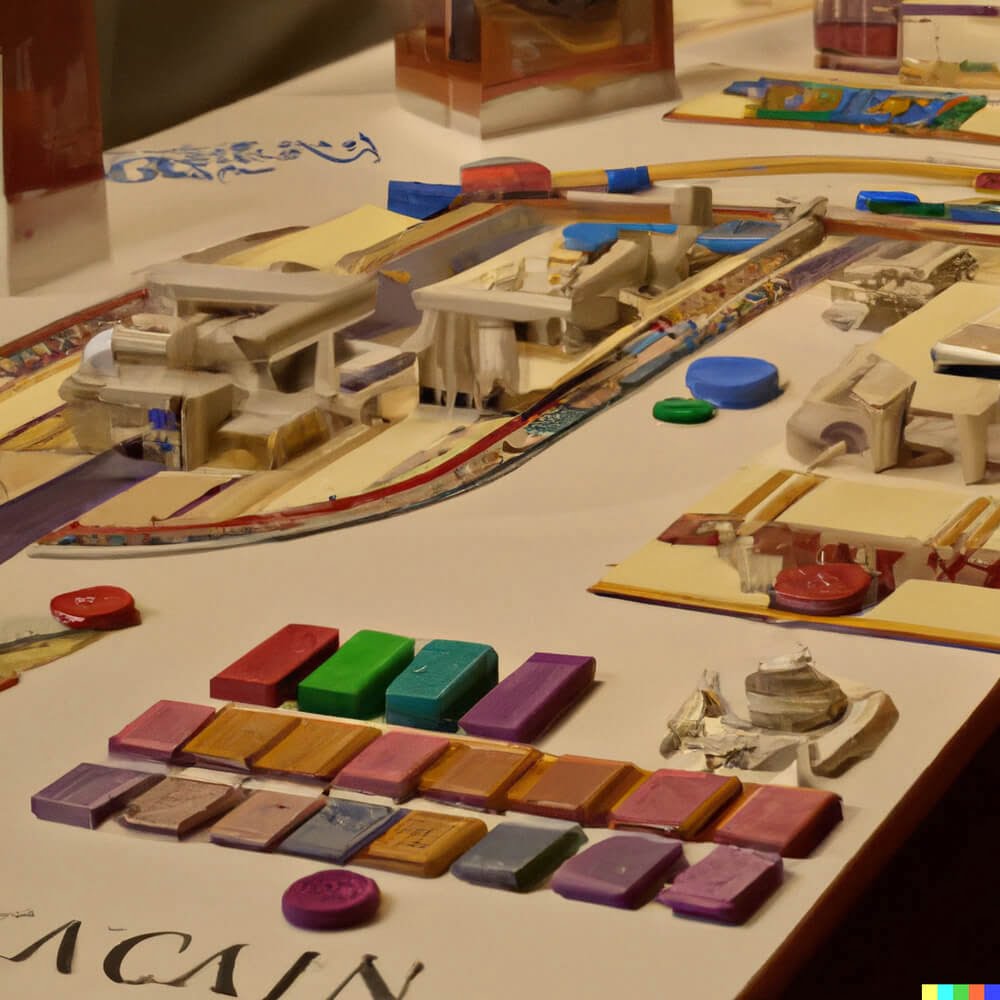Introduction
A dice board game is an enjoyable game which uses dice as the primary source of interaction and entertainment. The goal is usually to move pieces around a specific board in a certain order or pattern, either to achieve a score or reach some kind of target point. Generally, these games require two or more players in order to be fun and are highly engaging. Dice board games date back to ancient times, with documented evidence showing they were popular among ancient Romans and Egyptians. In Europe during the Middle Ages, throwing dice was seen as a form of entertainment and even fortune telling. Today, there are hundreds of different types of these games with both modern and classic versions available. Some popular examples include Monopoly®, Risk®, Yahtzee®, Ludo®, and many others.
History of Dice Board Games and Their Popularity
Dice board games have been popular since ancient times. Historians have found evidence of dice game boards that date back to 2000 B.C. Throughout history, the rules and materials used for these games varied greatly across regions and cultures, but the basic concept remained the same ” roll the dice and advance along various paths or take certain actions determined by the outcome of a roll. The modern era has seen a surge in popularity of dice board games, with 2012 seeing an 8 percent growth year-on-year according to The Guardian newspaper. From classic board game staples like Monopoly to more complex new offerings such as Dungeons & Dragons, there is no shortage of options when it comes to entertaining yourself or your family with a good ‘ol roll of the dice. As technology has become more accessible and widespread, even apps for mobile devices that serve as digital versions of existing dice board games exist now”which can provide a great way to learn how to play without having to buy physical copies of pieces and a gameboard. Whether you choose to play traditional board games using real dice or switch things up with digital options”the excitement and fun provided by these classic favorites remains timeless.
Different Types of Dice Games and Their Benefits
Dice board games are an incredibly popular form of entertainment for all ages, whether it’s in a family game night with friends or solo play. There are many different types of dice board games that offer unique and interesting gameplay elements; from strategy and problem-solving to luck and excitement. Here are some of the most popular dice games and their benefits:
Yahtzee ” Yahtzee is a classic dice game where players must roll five dice, collecting points based on specific combinations like three-of-a-kind or a full house. This game encourages logic and reasoning as players must figure out which combination they should keep when it’s their turn. It’s also filled with plenty of tension, as the player doesn’t know certain combinations until they roll the dice again.
Benefits: Yahtzee encourages players to sharpen their problem solving skills. Its foundation builds on planning ahead and strategizing, meaning it can help build important life skills such as creative problem solving. Additionally, luck plays into Yahtzee too; so those that enjoy rolling the dice may find themselves enticed by this exciting game!
Farkle ” Farkle is another classic that challenges players to use deduction and logical reasoning to be successful. Players have six dice that they can choose to either bank or re-roll in an attempt to hit three matching numbers (or more), ultimately earning more points for bigger numbers rolled each round.
Benefits: The strategic element of Farkle teaches important skill sets like balance and risk taking — do you take fewer risks to try for early points, or take several chances for higher point values? This game is great for those seeking adventure since it’s ever changing nature can add new challenges every time you play!
Rules for Setting Up and Playing a Dice Board Game
Setting up a dice board game is simple and easy. First, you need to gather the game components ” this typically includes the game board, playing pieces, and at least two dice. Depending on the type of game being played, there might also be additional pieces such as cards or tokens. Place the board in the center of the playing area and arrange all the pieces around it. After that, each player (usually 2-4) takes their pieces and places them on their starting positions indicated on the board.
The actual rules for playing a dice board game vary depending on the specific game. Generally speaking though, players take turns rolling both dice to determine their moves ” usually making steps forward or backward on the path/board depending on number combination determined by rolling of dice (for example: if player rolls 5 and 6 they must move 11 steps forward). Other rules usually depend on which space a particular player lands after a roll ” some spaces provide bonuses while other have special challenges that must be completed before further advancing. The exact object of any given dice board game depends highly on its type ” from travelling from one point to another to gathering sets of items or completing different tasks along a path or simply reaching a certain end point first …and many more variations exist!
Advanced Strategies for Winning Dice Games
Dice games can be both fun and strategic. One popular dice game is the classic board game, often referred to as Yahtzee. At its core, Yahtzee requires players to roll five six-sided dice and try to score combinations such as large straights, full houses and three-of-a-kinds. In order for a player to win at Yahtzee, they must master a few advanced strategies.
First, it’s important for players to understand the highest scoring combinations in the game and prioritize working towards those. For example, when rolling Yahtzee dice, a five-of-a-kind will provide the maximum number of points if all five die show the same number. Players should also make sure they maximize their opportunities during each turn by deciding whether to roll all or some of their dice based on their goals for that round. Additionally, mastering when and where to use one’s jokers can give players an edge over their opponents since jokers can help complete any combination want wanted without having further rolls of the dice.
To strengthen one’s chance of winning at Yahtzee it is important focus on setting consistent goals depending upon how close you are to achieving that combination you’re aiming for on a given turn. For example; A player might decide that they are always willing to take an average score rather than risk going for a complicated combo with low chances of success if not achieved upon a first roll. Being able to asses these risks successfully may be key in winning the game overall in addition to learning more advanced techniques like analysing probability distributions calculating optimal odds after successive rolls or even reading your opposition’s playing style as well as recognizing which patterns could potentially yield higher scores than others when completed. Ultimately with practice and dedication Dice Games like Yahtzee can become engaging recreational activities which require exciting decisions with every move!
Different Types of Dice Needed for Different Games
The dice board game is a classic game of chance that has been around since ancient times. It requires the use of several types of dice to play properly. The most common type is a six-sided die, or the cube shaped die with six numbered sides. This is usually the basic type used in most dice games but there are many other varieties that can be used depending on the rules of the specific game being played.
One popular variation of the six-sided dice is eight-sided dice, often called octahedral or nonagonal dice. These have eight faces marked with dots instead of numbers and these can also be used for traditional roll and move games such as Monopoly®. There are also ten-sided dice, or decahedrons which are usually used to determine movement on two axial planes (often referred to as d10s), twelve sided ones (d12s), and twenty-sided ones (d20s). These rarely seen specialty dice can provide a unique twist to some games, such as Pathfinder” by using different attributes for combat resolution instead of “hit points”. Ultimately, it just depends on which set of rules you are playing with.
In addition to different shapes and sizes, there are also various colors used in dice games such as red, blue and white/clear – each one signals something specific within context and understanding of the particular game’s ruleset. For example, in Yahtzee® players may use different colored five-sided dice to represent various categories for their final scorecard points tally at the end of their turn. With all these options available, there’s no wonder people keep coming back for more when it comes to this timeless board game staple!
Ideas for Making Traditional Dice Games More Interesting
1. Create elements of chance. Introduce an element of surprise by adding cards or extra dice to the game board. Cards could have certain effects on the game such as requiring a player to reroll or discount one of their rolls, while extra dice could add to the roll total or cause a player to lose all their points if they score a specific number.
2. Make it team-oriented. Have multiple people join forces as a team and battle against another team for ultimate victory! Instead of comparing total scores at the end, challenge each other to reach a certain goal before any other team does.
3. Include special powers and abilities in gameplay. Give each side something unique to them which can be used strategically to give them an edge over their opponent. Special powers could include boosting rolls, forcing re-rolls from the opposing side, allowing multiple rolls at once, not counting certain numbers and more special conditions that change up the game entirely!
4. Change up how you keep score. Instead of just having each side add up their scores afterward, have them work towards achieving particular points thresholds like getting three 6’s in one turn or hitting double 20’s exactly five times during the entire game; whatever creative goals your imagination will come up with! This can add an exciting and challenging twist to traditional dice rolling games.
5. Add obstacles throughout the play area that must be avoided or conquered by clever means such as careful combinations between two dice or making use of available extras on your turn like cards and extra dice added onto your regular two die rolls!
Creative Variations of Dice Board Games
Dice board games are a great way to bring friends and family together for some fun and interesting play. When it comes to spicing up the classic game of dice, there’s no shortage of creative variations to explore.
For starters, try adding some simple elements of chance by bringing in traditional playing cards. By combining an individual card draw with each roll of the dice, players are greeted with a completely new set of exciting possibilities such as rerolling or collecting bonus points each round. Another great game variation is to assign certain symbols or numbers on the dice that can be used as wildcards or multipliers, which inject some unpredictability into the mix.
If poker is more your style, consider blending it with a dice-based board game by assigning players a certain number of betting chips with each roll. This would allow players to elect how much they are willing to gamble after they determine their score from the throw”giving them far more control over their fate in each round than in a straight-up dice game.
No matter which type of variation you decide on, ensuring that everyone at the table feels comfortable is key for having an enjoyable experience. So for your next gaming night, why not embrace some creativity and make things interesting?
Conclusion
Playing dice board games is an enjoyable and rewarding pastime for both children and adults alike. For starters, since dice based games can be played without any prior knowledge or expertise, there’s a much lower entry barrier that allows people of any age to join in the fun.
Moreover, given their integration of chance elements, there’s a level of suspense that keeps everyone interested until the very end. On top of this, since these types of board games require strategizing to win, they’re a great way to sharpen problem-solving skills. Additionally, since the majority of them don’t require large amounts of material resources or items compared to other game genres, they make a good option if playing on tight budgets. Lastly, given the wide variety available covering themes from fantasy and history to politics and war ” you can always find something exciting to fit any taste!
Overall, dice board games are an excellent form of entertainment that keep their participants both engaged and entertained. From aiding cognitive development while ensuring fun amongst all players involved ” these games remain an exciting and rewarding pastime even in modern times!

I love playing all kinds of games – from classics like Monopoly to modern favourites like Ticket to Ride.
I created this blog as a way to share my love of board games with others, and provide information on the latest releases and news in the industry.





